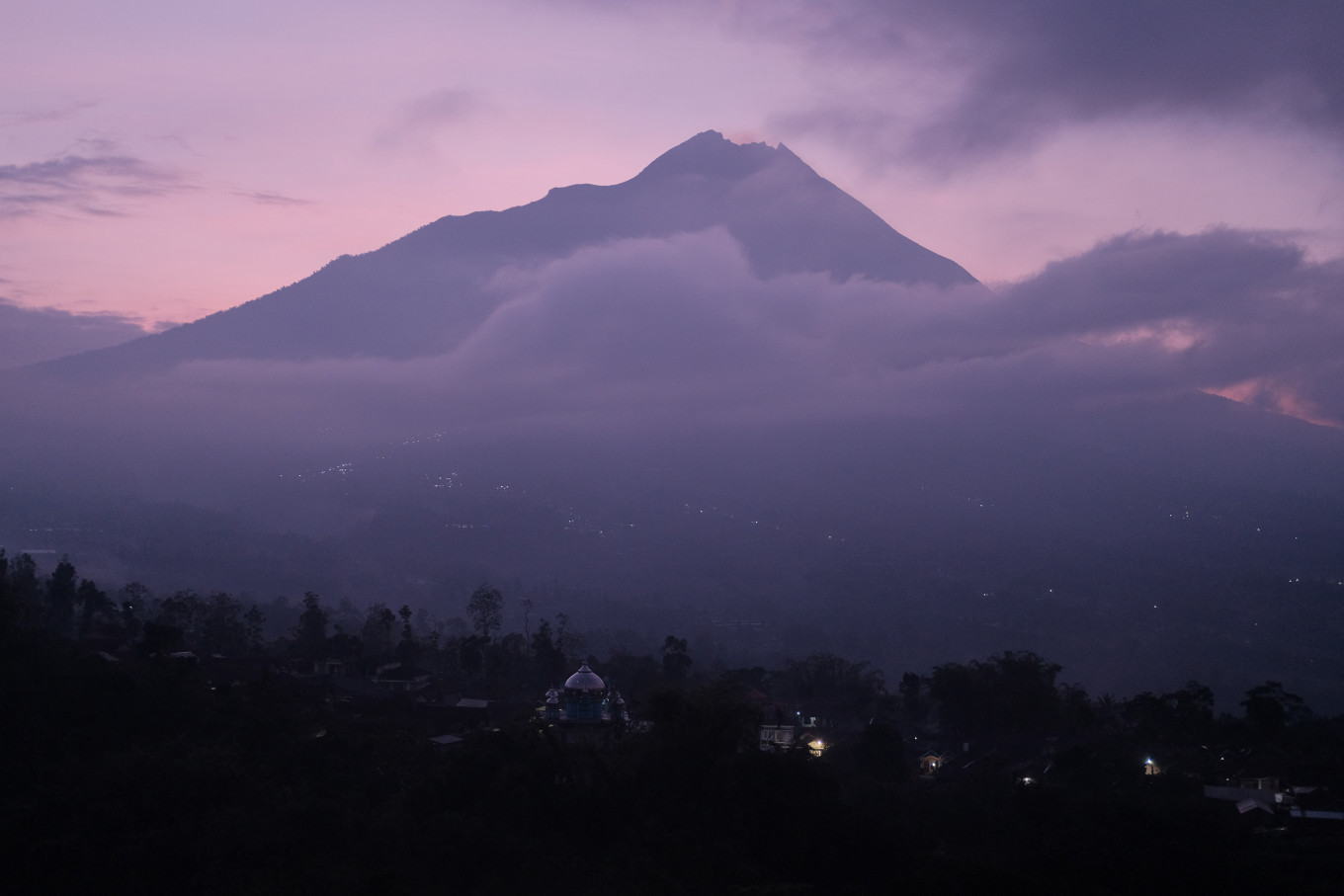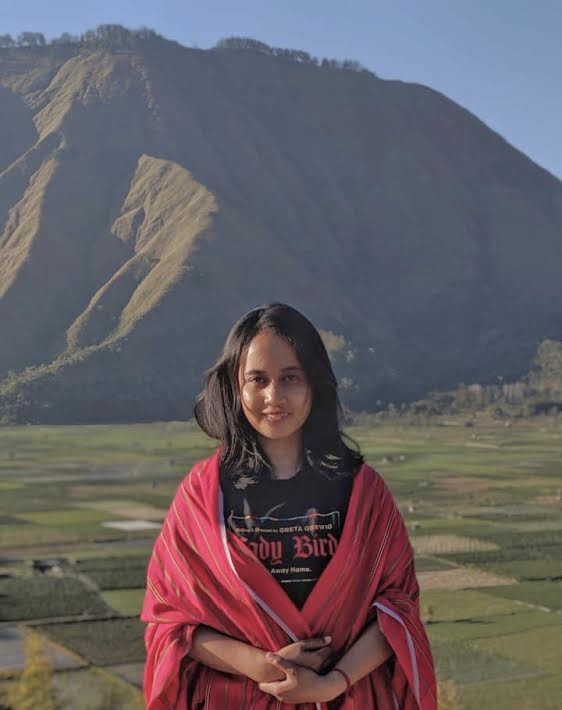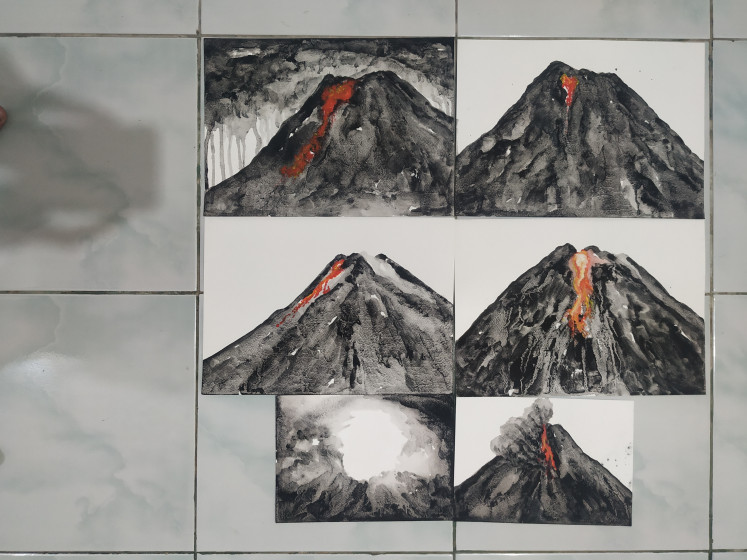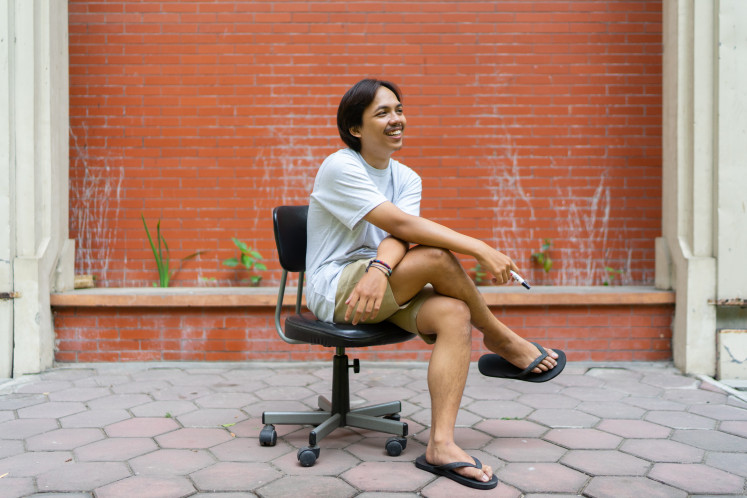Popular Reads
Top Results
Can't find what you're looking for?
View all search resultsPopular Reads
Top Results
Can't find what you're looking for?
View all search resultsAs Merapi rumbles, Yogyakarta youth take comfort in local wisdom
Long-held beliefs help many Yogyakarta residents cope with the threat of volcanic eruption.
Change text size
Gift Premium Articles
to Anyone
F
or many younger Yogyakartans, Merapi isn't just a mountain. It is an emblem of their staunch devotion to local wisdom, even as the city continues to modernize.
As its status was raised from waspada (alert) to siaga (stand by) on Nov. 5, 2020, the city's residents kept a close eye on Merapi, one of the country's most active volcanoes. In January alone, the Energy and Mineral Resources Ministry’s Geological Agency noted that Merapi had released hot plumes of volcanic material 95 times.
On Jan. 27, photos and videos showing a gray cloud over Merapi went viral. The responses of younger Yogyakartans varied from panic to efforts to share helpful information. Those who remained calm relied on long-held local wisdom regarding the mountain.
Marten Bayu Aji, an artist who moved from Jepara 10 years ago, believes the "horrific visual" of Merapi's hot clouds rising upward has made people think a natural disaster has already occurred. Having volunteered to help people during a previous Merapi eruption, the 28-year-old doubts that 2021 will see any significant explosion – even as experts warn of one – saying, "It's something no one can predict."
While Marten says he isn't "anti-science", he acknowledges that he has little faith in the Geological Disaster Technology Research and Development Center (BPPTKG). "I don't think our technology can predict what's below us," he notes.
Marten explains that he appreciates mythology more than science. The latter, he says, is more about understanding a pattern while the former is about building faith. "Merapi – and all mountains – offer a spiritual relationship with people," he says.
Sulawesi-born Wulandari shares a similar perspective. When she moved to Yogyakarta 11 years ago, the 28-year old was startled by Merapi's eruptions as volcanic activity and earthquakes were rare in her hometown.
Working as a filmmaker, Wulandari discovered much of the folklore surrounding Mount Merapi and the city itself. She now believes that Merapi has a spiritual connection with the people surrounding it, including her. This belief started after a 2018 meeting with Romo Asih, Merapi's current "spiritual guardian".
Wulandari, a filmmaker, said she grew a spiritual connection with Merapi after 11 years living in Yogyakarta. (JP/Wulandari)"From him, I felt how much Yogyakartans love Merapi. They never say 'Merapi has erupted,' but instead, 'The mountain has had its cycle.' They see the mountain as an ancestor, not something threatening."
She adds, "I'm not sure how to explain this, but every time Merapi erupts, I feel something unburdened within me."
Cup noodles and a front-row volcanic view
While Wulandari has been impacted spiritually, Chandra Gatot Pribadi, 35, saw his neighborhood in Kaliurang, about 7 km away from the volcano’s summit, affected in a literal sense.
"Our economy relies on tourism activity, which is already bad because of the pandemic. Now we also have the eruption," he says.
Living close to the summit means Gatot and his neighbors are experienced and always prepared. The Kaliurang neighborhood has set up a routine night patrol to keep everyone updated about Merapi's activities. A shelter is maintained in case of an emergency evacuation.
Although Gatot has experienced many of Merapi's eruptions first-hand – in 1994, 1997, 2006 and 2010 – he recalls the 2010 eruption as particularly terrifying – "the worst". He says he was traumatized. "Every time I hear a rumbling sound, I panic and check YouTube to see how Merapi is doing."
Gatot says the Kaliurang soccer field is now an outdoor amphitheater. Only the attraction is the eruption and not a movie.
"I even had the idea of selling Pop-mie [cup noodes] or wedang ronde [sweet glutinous rice balls in hot broth] and turning the place into a tourist spot," he says with a laugh.
Ipeh Nur, a 27-year-old artist, uses moments such as this as inspiration for her artwork. After a "terrible" experience during a previous Merapi eruption, when she saw people driven into a panic by false word-of-mouth rumors – "those in the North running to the South to escape the eruption, and those from the South running to the north to escape a Tsunami" – Ipeh now finds eruptions "terrifying but also beautiful”.
A series of Merapi-themed artwork made spontaneously by Ipeh Nur during the latest eruption (JP/Ipeh Nur)While watching a live stream of Merapi on YouTube, Ipeh created a series of watercolors of the volcano. It was not the first time Ipeh had been inspired by the mountain. Gegerboyo, an artist collective of which Ipeh is a member, took its name from a famous hill near Merapi.
Comfort in stories
Ashari Aria Bare, a 24-year-old student and Yogyakarta native, regrets the absence of Merapi's current spiritual guardian, Romo Asih, during the latest volcanic activity. Compared to his predecessor Mbah Maridjan, Asih rarely makes public appearances, disappointing believers like Ashari.
Maridjan, on the other hand, used to share beliefs such as how Yogyakarta's "imaginary axis" symbolized the balance and harmony between humans, God and nature – meaning that the things that happened with Merapi were intended to sustain balance in the universe. The axis consists of Mount Merapi in the north, Tugu Yogyakarta in the middle and the Southern Ocean (Laut Kidul) in the south.
Ashari Aria Bare, a student in Yogyakarta, laments the current absence of a strong Mount Merapi spiritual guide. (JP/Ashari Aria Bare)"The juru kunci [keepers of the key] used to be a third party between the mountain and Yogya Palace," Ashari says, using a term often used to describe a custodian of a sacred place.
"The juru kunci help us interpret what's going on with the mountain," Ashari says, lamenting the absence of explanation and calming story-telling that used to come from Maridjan.
While some may consider the belief in local wisdom outdated, it has undoubtedly helped many Yogyakartans, especially those living close to Merapi, feel calmer about the volcano’s sometimes threatening nature.
Ashari, who can see Merapi clearly from his home, says, "Along with scientific data, these myths help us consider what actions to take during the situation. The stories in the myth move us."













